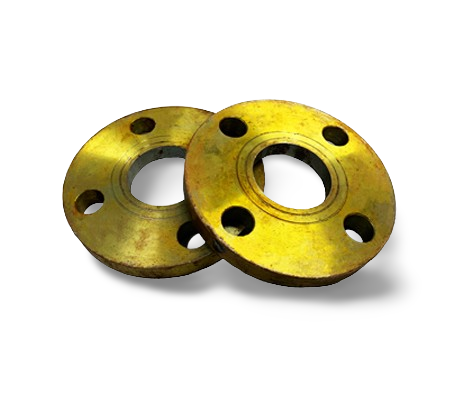Pipes are used everywhere to transport liquids and gases. Big pipes are used in factories, refineries, and other industrial sites.
Properly joining these pipes is very important. If the pipe joints are not made well, it can cause serious problems.
One good way to join pipes is by using lap joint flanges. This blog will explain how lap joint flanges help reduce strain and stress on piping systems.
What are Lap Joint Flanges?
Lap joint flanges are a type of connector used to couple two pipes together. They get their name from the way the flanges “lap” over each other at the joint. Two matching flange pieces have raised faces that fit tightly together. Many bolts are used to secure the flanges.
This creates a strong, leak-proof seal between the two pipe sections. The flanges are made from sturdy metals like carbon steel, stainless steel, or special alloys. They can handle very high pressures and temperatures inside the pipes.
What Leads to Piping Stress?
There are several reasons why pipes experience stress and strain. As liquids and gases flow through, they apply continuous force on the pipe walls. This can cause the pipes to slowly shift over time.
Temperature changes can make pipes expand and contract. This puts stress on the joints where they are coupled together. Ground movements, heavy winds, and equipment vibrations can all transmit forces to the pipes.
Importance of Reducing Stress
If too much stress builds up, it can have serious consequences. Extreme pipe strain can lead to joint failure, gasket blowouts, and dangerous leaks. This can shut down entire operations and cause environmental damage.
Repeated stress cycles can cause mental fatigue over the years. Cracks may develop, and the pipe can potentially rupture. This is a major safety hazard, especially when transporting hazardous materials.
Benefits of Lap Joint Flanges
- Using lap joint flanges is an effective way to minimize stress on the piping at the connection points.
- Their unique lap joint design helps distribute forces more evenly. This lowers the strain and bending moments on each pipe section.
- The heavy-duty lap joint flanges are very rigid. This prevents the pipes from shifting out of position due to thermal expansion or external loads.
- The tight metal-to-metal seal ensures no leaks, even under immense pressure.
- Another key benefit is modularity. Lap joint flanges allow easy assembly, disassembly, and reconfiguration of piping networks as needed. This flexibility reduces the number of joints needed.
- Installation is simple, using standard gaskets and bolt patterns. The self-centering flanges automatically align pipes properly. No special tools or labor skills are required.
Conclusion
In critical piping applications, managing system stress and strain is vitally important. Lap joint flanges are an ideal coupling solution that contributes significantly to this.
Their unique design, durability, and flexibility make lap joint flanges perfect for reducing stress loads at pipe joints. When properly selected and installed, these flanges provide a cost-effective way to extend piping network service life.
